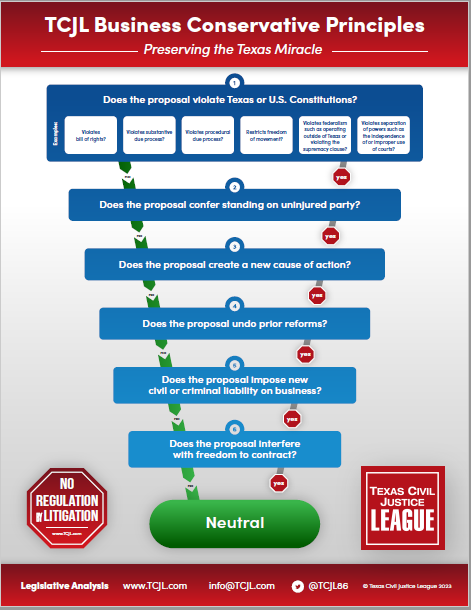
Justice Katy Boatman
In a case in which plaintiffs moved for continuance of a no evidence summary judgment hearing on the basis that their attorney’s death (which defendants knew about and served the deceased lawyer with its motion anyway) left them without inadequate time for discovery, Justice Katy Boatman has asked SCOTX to clarify that appellate courts need only apply the standard prescribed by TRCP 166(g) without regard to the different standards for continuances at trial contained in Rules 251 and 252.
Alexey Stanin, Nina Stanin, and Alexey Stanin and Nina Stanin as Next Friend of Diana Stanin, Minor v. Mark Moore and Mistream Transportation Company, LLC (No. 14-24-00840-CV; October 30, 2025) arose from an accident in which Midstream’s employee Moore allegedly rearended a passenger vehicle, seriously injuring the Stanin family. In February 2023 the Stanins filed suit. Ten months later, their lawyer died. Defendants knew about the lawyer’s death at least by the end of February 2024, when they asked the trial court for a continuance of the scheduled trial because of his death. The trial court granted the motion and reset the trial. The parties, however, did not submit an agreed amended docket control order as the trial court ordered. On the same day they filed for the continuance, Defendants filed a motion for no evidence summary judgment. Although their counsel knew the plaintiff’s lawyer had died, they nevertheless served the motion on him rather than serving the Stanins or asking the trial court for help. The Stanins got a new lawyer in the summer of 2024, who filed a continuance of the summary judgment hearing scheduled on August 6. Defendants opposed the motion and the hearing proceeded. The trial court granted the MSJ and denied Plaintiffs’ motion for a continuance. When the trial court denied Plaintiffs’ motion for reconsideration and new trial, they appealed.
In an opinion by Justice Boatman, the court of appeals reversed and remanded. The court seemed understandably appalled at Defendants’ conduct. “We have not found a case directly on point,” it observed, “but we think it elementary that service on a party’s attorney of record doesn’t count if that attorney has died—or at least if opposing counsel knows he has died, as here. Once the Stanins’ lawyer died, they were pro se, and service should have been made on them….Instead, the Defendants pressed forward with a no evidence summary judgment motion that they purported to serve on ‘all counsel of record’ even while recognizing that ‘Plaintiffs are not represented by counsel at this time.’” The Stanins’ new lawyer, moreover, followed TRCP 166(g), filing a verified motion for continuance explaining that she took over for the deceased lawyer after the summary judgment hearing had already been set. To make matters worse, Defendants not only opposed the motion, but never complied with the trial court’s prior order to submit an agreed scheduling order. Under the circumstances, the Stanins established that they did not have adequate time for discovery in the interim between the retention of their new lawyer and the hearing.
The trial court didn’t consider the request for continuance because Defendants’ didn’t get three days’ notice as required by local rules. Nevertheless, the trial court allowed Defendants to argue their opposition to the motion anyway. It granted the motion that day and didn’t rule on the motion for continuance until a week later, when it was moot. The court of appeals stated that although trial courts have broad discretion, “we think this is a bridge too far.” Defendants further argued that the Stanins could have avoided summary judgment by making a declaration, but the court found the argument “incredulous” considering that Defendants’ motion, which listed 63 points on which Plaintiffs had no evidence, and that the Stanins couldn’t refute that Moore was acting in the course and scope by declaration. The court concluded that the trial court abused its discretion and remanded the case.
Justice Boatman added a concurring opinion as well, in which she opined that SCOTX’s ruling in Tenneco Inc. v. Enter. Products Co., 925 S.W.2d 640 (Tex. 1996), which held that Rule 166(g) requires a nonmovant facing a no evidence MSJ who argues that it has not had an adequate time for discovery must file an “affidavit explaining the need for further discovery” or “a verified motion for continuance.” But, as she observed, the Court “also cited Rules 251 and 252 in support of that holding.” In Justice Boatman’s view, those rules should only apply when a party requests a continuance of trial, pointing out that one other intermediate courts of appeals has so held that that since Tenneco the Court has relied solely in Rule 166(g). Noting that Rules 251 and 252 were adopted in 1941, prior to adoption of the current “summary judgment regime,” she argued that courts should look solely to Rule 166(g) when deciding whether a nonmovant has had adequate time to conduct discovery prior to a no evidence MSJ hearing for purposes of a motion for continuance of the hearing. Additionally, since Rules 251 and 252 have different standards than Rule 166(g), it doesn’t make sense to apply all three rules to the same motion.
The issue became relevant in this case because Defendants argued that the Stanins failed to comply with Rule 252’s “more onerous requirements” in their verified motion for continuance. As Justice Boatman concluded, “[w]e do not believe that today’s holding depends on which rule controls here—the Stanins’ verified motion for continuance met the standards set by all three rules. But I write separately to ask that the Supreme Court of Texas consider this weighty question.”












